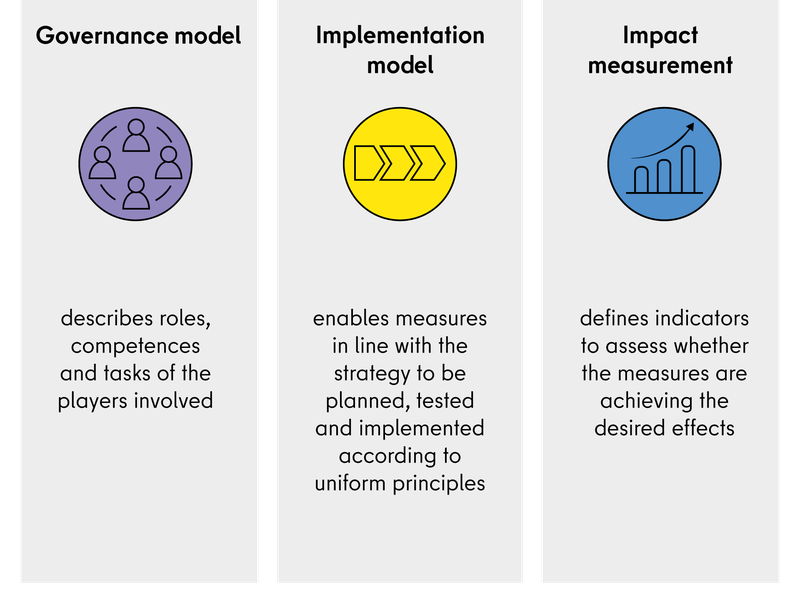
Governance actors
Governance of the GD:B strategy involves a range of actors, both inside and outside the administration, working together at different levels. This involves centralized steering and decentralized implementation of the strategy. More
The development of a smart city requires the cooperation of different actors. For this reason, measures taken under the Gemeinsam Digital: Berlin strategy must be geared to the needs of the urban community, respond to current challenges and be created with the involvement of the city’s diverse actors. Nevertheless, clearly defined responsibilities and process stages are necessary in order for the state government to be able to manage smart urban development strategically and transparently. Flexible and rapid interaction for a functioning and capable city is supported by governance structures that regulate decision-making processes in the areas of smart city and digital transformation.
The Gemeinsam Digital: Berlin strategy proposes a decision and implementation model for the development and implementation of measures. This includes three key elements:

The GD:B strategy is cyclical at various levels: Governance structures ensure that the strategy itself is evaluated at regular intervals and adapted to changing needs and lessons learned. Individual measures are prototypically implemented, tested and refined. Based on targeted knowledge transfer and feedback loops, a continuous learning process is triggered from which the administration and the urban community benefit to an equal extent.
The Smart Water Action Team organizes implementation of the measure independently (Governance Level 1 – Measures) and receives support from the Support Team. The Action Team consists of: Kompetenzzentrum Wasser Berlin (coordination), Technologiestiftung Berlin, Berliner Wasserbetriebe, Senate Department for the Environment, Urban Mobility, Consumer Protection and Climate Protection and Senate Department for Urban Development, Building and Housing. The mandate and funding are provided to the Action Team by the CDO/StS D (Governance Level 2 – Selection). The outcomes and experience derived from the implementation process and collaboration are incorporated in the evaluation of the learning strategy. To this end, the Action Team reports regularly to the Gemeinsam Digital: Berlin Unit (Governance Level 3 – Learning Strategy).
Download it here: strategy Gemeinsam Digital Berlin
Click here for the annex: annex to the strategy